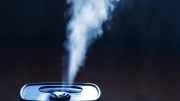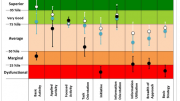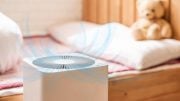
According to the National indoor air survey by Finnish Institute for Health and Welfare, people believe that the health risks related to indoor air are greater and more serious than they are according to the research data. Finns’ knowledge and risk beliefs related to indoor air were surveyed for the first time.
Research on the subject is important, because differing beliefs on the role of indoor air in human health may cause confusion. Common understanding is also important for finding solutions to indoor air problems in buildings and the treatment of people in health care.
Some degree of moisture damage can be found in almost all buildings, but only a small proportion increases the risk of asthma.
According to research data, moisture damage and microbial damage occurs in almost all buildings at some point of their lifecycle. Only a small proportion of the damage is severe enough to increase the risk of developing asthma.
However, well over one half of the respondents of the survey considered the risk posed to human health by even minor moisture damage to be so severe that action to repair the damage should be taken immediately.
“The guiding principle is that moisture damage has to be prevented and repaired. How great the health risk is and how urgently action must be taken depends on matters such as the extent of the damage and the level of usage of the premises concerned,” explains Professor Juha Pekkanen.
Actinomycetes may be a sign of moisture damage, but not a definite sign of indoor air being harmful to health.
Approximately two thirds of the respondents considered the occurrence of actinomycetes to be a definite sign that indoor air is harmful to health.
Based on research data, actinomycetes may be a sign of moisture damage or microbial damage in the building, but their occurrence in the building does not automatically prove that it would be harmful to people’s health to use the building.
“A comprehensive assessment of the building should be carried out by qualified professionals,” says Research Professor Anne Hyvärinen from the Finnish Institute for Health and Welfare.
People come into contact with actinomycetes, for example, when they engage in activities in nature, because actinomycetes are common in our environment. They can also be found in the soil and in outdoor air when the ground is not frozen.
Buildings must be examined as symptoms cannot be used as a direct indicator of impurities in indoor air.
Almost 60 percent of the respondents found it difficult to assess whether the respiratory symptoms of a person are caused by indoor air or some other factor.
Based on research data, symptoms associated with indoor air cannot be used as a direct indicator of harmful indoor air. The development of symptoms is always individual and there are also other factors that contribute to symptoms (e.g. age, state of health, and stress factors, such as the level of enjoyment and satisfaction at work and at school) in addition to impurities in indoor air. Fears and beliefs of harmful effects may also cause objectively measurable symptoms and physiological responses.
“It is important that the users of the building are satisfied with the indoor environment. Their reported symptoms and experiences related to the indoor air quality, such as smells, stuffiness, or the temperature, also provide valuable additional information when problems related to the building are studied and assessments are planned,” explains Chief Physician Jussi Lampi from the Finnish Institute for Health and Welfare.
Research data will lead us towards a better quality of indoor environments and better treatment of people
The National indoor air survey was conducted as part of the Finnish Indoor Air and Health Programme. The aim of the survey was to explore Finns’ risk beliefs and knowledge on the health effects of indoor air. A random sample of 1,797 Finns aged between 25 and 64 responded to the survey that was mailed to their home addresses.









Why hasn’t anyone taken a hard look at banning the use of cell phones on public transportation during the COVID19 crisis? Seems Counterintuitive….
Soon, we will all be walking around in our 100% isolated body suits, plastic face shields and all. 100% HEPA air filtration and air cooling with the extra power pack model. The slogan will be “There is only one way to be sure” 🙂 The jokesters will call it the full body dildo.